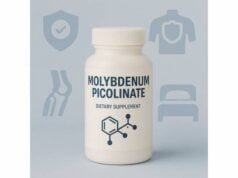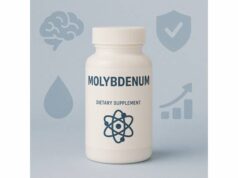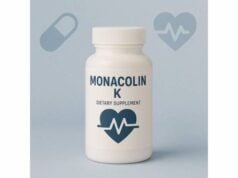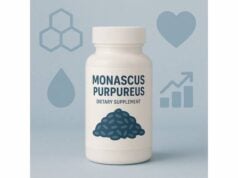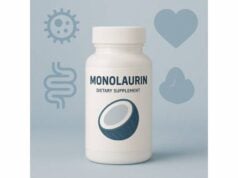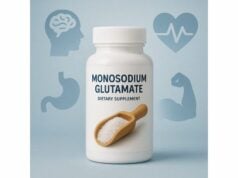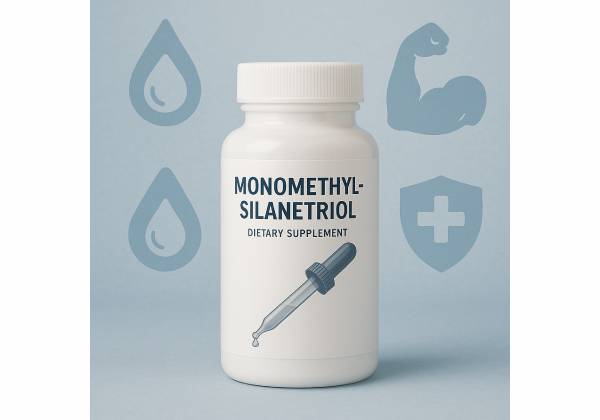
Monomethylsilanetriol (MMST) is a highly soluble, low-molecular-weight silicon compound used in dietary supplements and cosmetics. In the body, MMST contributes bioavailable silicon—the form needed for collagen cross-linking, elastin integrity, glycosaminoglycan synthesis, and mineralization processes in bone. Early human studies show that supplemental MMST increases circulating silicon and may improve select skin parameters over several months. For bones and joints, the broader silicon literature is promising but still developing; the strongest claims come from related forms (such as orthosilicic acid), while MMST-specific data are emerging. Most people tolerate MMST well at label doses, and major authorities have assessed its proposed supplemental use without safety concerns when used as directed. As with any trace-mineral supplement, smart use matters: choose verified products, dose by elemental silicon (mg Si), give changes time, and prioritize a food-first pattern rich in silicon-containing whole foods (e.g., oats, barley, beer with moderation, some mineral waters). This guide translates the best current evidence into practical steps you can use today.
Essential Insights
- May support skin smoothness and hydration over 3–5 months; contributes bioavailable silicon for collagen and elastin.
- Typical supplemental range: 5–15 mg elemental silicon (Si) per day from MMST; some protocols use ~10 mg Si/day.
- Safety: generally well tolerated at label doses; start low if you have a sensitive stomach.
- Avoid or seek medical advice if pregnant, breastfeeding, have chronic kidney disease, or are giving to children.
Table of Contents
- What is monomethylsilanetriol?
- Does it actually work for skin, hair, and bones?
- How to take MMST correctly
- Who benefits most and who should avoid
- Safety, side effects, and interactions
- MMST vs other silicon forms: which to choose?
What is monomethylsilanetriol?
Monomethylsilanetriol (often abbreviated MMST) is an organosilicon molecule consisting of a single methyl group bonded to a silanetriol (Si(OH)₃CH₃). Two traits make it attractive for supplementation and topical formulations:
- High aqueous solubility and small size. MMST dissolves readily in water and stays in monomeric form, which supports absorption.
- Physiological compatibility. In vivo, MMST contributes to the body’s bioavailable silicon pool—the fraction that can participate in connective-tissue remodeling and mineral interactions.
Why silicon matters. Silicon (Si) is not officially designated as an essential nutrient for humans, but it appears to play structural and regulatory roles:
- Collagen and elastin cross-linking. Silicon participates in formation and stabilization of collagen’s triple helix and elastin networks, supporting skin resilience, tendon integrity, and vascular elasticity.
- Glycosaminoglycans (GAGs). Silicon is implicated in GAG synthesis (e.g., hyaluronic acid), affecting hydration and viscoelastic properties in skin and cartilage.
- Bone mineralization. During early bone formation, silicon is concentrated at osteoid and growth regions, where it may influence matrix organization and subsequent calcium deposition.
MMST in products. You’ll find MMST in:
- Liquid drops or solutions standardized by elemental Si (mg/day).
- Acacia- or maltodextrin-stabilized powders, where MMST is anchored in a carrier to improve handling and taste.
- Topicals, in which MMST acts as a silicon donor for skin targets.
MMST vs “silicone.” They are different. Silicon is a mineral element; silicone is a family of inert polymers used in cookware and implants. Supplements deliver silicon, typically as MMST or orthosilicic acid (OSA)—not silicone.
Key expectations. MMST is not a stimulant; it works on structural tissues. Think slow, steady remodeling. Skin and nail changes may be noticed after 8–12 weeks; musculoskeletal benefits usually take longer and depend on the rest of your nutrition, mechanical loading (exercise), and baseline status.
Quality markers to look for.
- Dose stated as mg elemental silicon (Si) per serving.
- Stability and purity documentation (e.g., third-party testing).
- Transparent labeling of carriers (acacia gum, maltodextrin) and excipients.
- Clear use directions and cautions.
Does it actually work for skin, hair, and bones?
Skin, hair, and nails. Human trials with silicon donors (including MMST and stabilized OSA) report improvements in select skin metrics over multi-month use. Outcomes most consistently observed are fine wrinkle depth, skin texture/smoothness, and subjective radiance/hydration. Nail fragility may also decline over time. These effects align with silicon’s roles in collagen cross-linking and GAG-mediated hydration. Not every metric changes in every study, and seasonal factors (humidity, sun exposure) can confound results; still, the trend across controlled trials is directionally positive when 10 mg Si/day is taken over 12–20 weeks.
Hair. Improvements are subtler but may include perceived shine, breakage resistance, and vitality in some participants after several months. Mechanistically, silicon is enriched in hair shafts, and adequate silicon supports keratin organization—but the evidence base remains smaller than for skin outcomes.
Joints and connective tissue. Silicon’s influence on cartilage proteoglycans suggests a potential role in joint comfort and resilience, particularly when paired with resistance training and adequate protein. High-quality joint RCTs focused solely on MMST are limited; most supportive data come from orthosilicic acid studies and observational analyses linking higher silicon intakes to musculoskeletal markers.
Bone health. The broader silicon literature (dietary silicon and OSA) shows:
- Associations between higher silicon intake and greater bone mineral density (BMD) in certain groups.
- Biological plausibility via effects on early bone matrix formation and mineral deposition.
- Intervention signals in studies using orthosilicic acid, sometimes alongside calcium and vitamin D.
Where does MMST specifically fit? MMST contributes to the same bioavailable silicon pool used for matrix remodeling, and human data show it raises serum/urinary silicon at typical supplemental intakes. However, long-term BMD or fracture outcomes with MMST alone have not yet been established. If bone support is your primary goal, MMST can be part of a comprehensive plan—adequate calcium (1,000–1,200 mg/day), vitamin D (per labs), protein (≥1.0–1.2 g/kg/day), and progressive load-bearing exercise—but it should not replace these fundamentals.
How strong is the evidence overall?
- Skin/hair/nails: Moderate for small improvements over months at ~10 mg Si/day.
- Joints: Preliminary.
- Bone: Suggestive based on silicon research; MMST-specific long-term endpoints are limited.
Bottom line: For appearance-focused goals, MMST is a reasonable, low-risk trial at label doses for 3–5 months. For skeletal outcomes, use MMST as a complement to proven nutrition and training basics.
How to take MMST correctly
1) Dose by elemental silicon (Si). Products vary in concentration. Use the elemental Si figure, not total solution weight. Practical ranges:
- Start: 5–10 mg Si/day (e.g., once daily).
- Typical: 10 mg Si/day for 12–20 weeks, then reassess.
- Upper routine range: 15 mg Si/day, divided (morning/evening), if well tolerated and your goal is skin/hair support.
- Do not exceed label directions. Higher intakes have not demonstrated better outcomes in controlled human trials.
2) Timing and administration.
- With or without food: Either is acceptable. If you experience mild GI upset, take with food.
- Split dosing: If your product allows, split into 2 doses (AM/PM) to maintain steadier exposure.
- Hydration: Take with a full glass of water.
- Topicals: For cosmetic serums containing MMST, apply to clean, slightly damp skin; follow with moisturizer. Expect subtle changes over 8–12 weeks.
3) How long to try. Commit to at least 12 weeks; connective tissues remodel slowly. For nails and hair, 16–20 weeks is more realistic.
4) Stacking that makes sense.
- Vitamin C (75–200 mg/day) supports collagen synthesis; pair with MMST for skin/joint goals.
- Protein (≥20–30 g per meal) and resistance training amplify musculoskeletal benefits.
- Collagen peptides (5–10 g/day) may complement MMST through different mechanisms (peptide signaling + amino acid supply).
- Avoid horsetail (Equisetum) combinations unless the product is thiaminase-free and standardized; many horsetail extracts contain thiaminase, which can deplete vitamin B1.
5) Practical protocols.
- Skin-first plan: 10 mg Si/day from MMST + 100 mg vitamin C daily for 16 weeks.
- Active aging plan (bones/joints): 10 mg Si/day + adequate calcium/vitamin D + 3 weekly resistance sessions for 6+ months.
- Sensitive stomach: 5 mg Si/day with food for 2 weeks, then increase to 10 mg/day if tolerated.
6) Quality and storage.
- Buy from brands providing third-party testing (identity, potency, heavy metals).
- For liquids, close caps tightly; store per label (room temp away from direct sun).
- For powders, use a dry scoop to prevent clumping.
Measuring response.
- Skin: Before/after photos under the same lighting monthly.
- Nails: Track breakage/peeling weekly.
- Joints: Rate morning stiffness or recovery after exercise.
- General: Note any GI symptoms during the first two weeks.
If you see no meaningful change after a full 12–20-week trial at ~10 mg Si/day, MMST may not be a priority for your goals.
Who benefits most and who should avoid
Most likely to benefit
- Adults seeking skin texture support with patience for gradual changes over months.
- Individuals with low dietary silicon intake, such as those who rarely consume whole grains, certain vegetables, or silica-rich mineral waters.
- People focused on connective-tissue maintenance, including recreational athletes managing repetitive load (tendons/ligaments).
- Perimenopausal and postmenopausal adults building a bone-supportive routine (diet, vitamin D, strength training), for whom an MMST trial may be a reasonable adjunct.
Situations calling for extra care (medical guidance recommended)
- Chronic kidney disease (any stage). Silicon is renally excreted; reduced kidney function can alter handling of trace minerals.
- Pregnancy or breastfeeding. Data on MMST during these periods are limited; defer to your clinician.
- Pediatrics. Routine MMST use in children is not established.
- History of nephrolithiasis (kidney stones). While bioavailable silicon is largely excreted as orthosilicic acid, anyone with stone history should discuss new supplements with a clinician.
- Multiple supplements or polypharmacy. Add one change at a time so you can attribute effects and avoid dose stacking.
Who should avoid (until cleared by a professional)
- Individuals with known hypersensitivity to product excipients (e.g., acacia gum).
- Anyone on a therapeutic diet with strict mineral/fluid constraints unless the prescriber approves.
- People using horsetail-containing blends without verification of thiaminase-free status and heavy-metal testing.
Special populations and lifestyle notes
- Vegans and vegetarians often have higher silicon intakes from plant foods; a supplement may still be useful if you’re targeting skin goals or if labs/clinician advise.
- Endurance athletes may benefit indirectly via connective-tissue turnover, but structured training and recovery trump any single micronutrient.
- Low-acid diets or chronic use of acid-suppressing meds can alter mineral handling; MMST is soluble and generally unaffected, but discuss with your provider.
Practical tip: If you’re adding MMST to an already complex stack, temporarily pause non-essential add-ons for 2–3 weeks, introduce MMST, and track changes. This simplifies signal detection and reduces interaction risk.
Safety, side effects, and interactions
Overall safety profile. At typical supplemental intakes (about 5–15 mg elemental Si/day), MMST is generally well tolerated in healthy adults. Independent toxicology programs using internationally accepted methods have evaluated MMST-containing preparations and did not find genotoxicity. Regulatory scientific panels have concluded that MMST used as a source of silicon in food supplements is not a safety concern when used under proposed conditions.
Common experiences.
- Gastrointestinal: A small number of people report mild stomach upset or loose stools when starting liquid MMST; taking with food or splitting the dose often helps.
- Taste/aftertaste: Some liquids have a slightly mineral or botanical aftertaste depending on the carrier.
Less common concerns.
- Allergy/sensitivity to carriers (e.g., acacia gum). Discontinue if you develop rash, itching, or swelling and seek medical advice.
- Over-supplementation. More is not better; there’s no evidence that doses above typical ranges accelerate benefits, and excessive stacking with other silicon forms is unnecessary.
Interactions. No clinically significant drug interactions are well established for MMST at standard doses. General mineral-supplement practices still apply:
- Separate from medications by 2–4 hours when possible, especially fluoroquinolone or tetracycline antibiotics (a conservative precaution applied to many minerals), and from thyroid hormone replacement.
- Diuretics and renal function: Because silicon is primarily eliminated by the kidneys, those on diuretics or with compromised renal function should consult their prescriber.
- Silicon-rich waters: If you also drink high-silicon mineral water, count that intake to avoid unnecessary stacking.
Lab tests and monitoring. Routine blood tests do not include silicon. If you’re using MMST for bone goals, track 25-hydroxyvitamin D, calcium intake, BMD (DEXA) at intervals recommended by your clinician, and training logs (resistance loads, step counts). For skin goals, standardized photos and hydration/texture scales are more informative than labs.
When to stop and seek care.
- New or worsening kidney symptoms (flank pain, changes in urination), allergic signs, or persistent GI distress.
- If you’re pregnant, breastfeeding, or managing chronic disease and started MMST without prior discussion, pause and consult your clinician.
Environmental and product safety. Choose products with heavy-metal testing (particularly aluminum, arsenic, lead) and microbial limits. For liquids, adhere to the shelf-life and avoid contamination (do not touch droppers to the mouth or skin).
MMST vs other silicon forms: which to choose?
Orthosilicic acid (OSA) and stabilized OSA (e.g., choline- or maltodextrin-stabilized).
- Strengths: Most widely studied in human supplementation, with signals in skin and nail outcomes and supportive markers for bone turnover in some trials (often alongside calcium/vitamin D).
- Considerations: Stability in solution can be challenging; stabilization prevents polymerization but dictates formulation.
MMST (monomethylsilanetriol).
- Strengths: Highly soluble, easy to formulate in liquids, and demonstrated to raise serum/urinary silicon at typical doses. Some human cosmetic data suggest improvements in wrinkles/UV-spot metrics over months.
- Considerations: Fewer long-term, MMST-only trials on BMD or fracture outcomes versus stabilized OSA.
Silica gels/colloids/polymeric silicates.
- Strengths: Common and inexpensive.
- Considerations: Poor bioavailability when polymerized; large or aggregated forms contribute little to the bioavailable Si pool.
Horsetail (Equisetum) extracts.
- Strengths: Plant-based silicon source; some products are standardized.
- Considerations: May contain thiaminase (destroys vitamin B1) unless heat-treated or specifically processed; quality and heavy-metal content vary. Use only if the brand provides thiaminase-free and contaminant testing.
Topical silicon donors (including MMST).
- Strengths: Deliver silicon locally for cosmetic outcomes; can be paired with oral silicon.
- Considerations: Topicals do not substitute for systemic support when the goal is bone or joint health.
How to choose.
- If your focus is skin aesthetics and you prefer liquids: MMST at ~10 mg Si/day for 12–16 weeks is a practical first trial.
- If you want the most studied oral route for bones and nails, a stabilized OSA product may offer the largest evidence base today.
- If you already take a verified, well-tolerated MMST and see benefits, there’s no compelling reason to switch.
- Avoid polymeric silica gels marketed with vague “high silicon” claims unless the brand documents bioavailability.
Cost and compliance. Choose the format you’ll actually take daily. In real life, adherence beats theoretical advantages.
References
- The silicon supplement ‘Monomethylsilanetriol’ is safe and increases the body pool of silicon in healthy Pre-menopausal women 2013 (RCT)
- Safety of organic silicon (monomethylsilanetriol, MMST) as a novel food ingredient for use as a source of silicon in food supplements and bioavailability of orthosilicic acid from the source 2016 (Guideline/Opinion)
- A toxicological evaluation of monomethylsilanetriol (MMST) stabilized in acacia gum, a novel silicon preparation 2020 (Toxicology)
- Anti-Aging Effects of Monomethylsilanetriol and Maltodextrin-Stabilized Orthosilicic Acid on Nails, Skin and Hair 2018 (RCT)
- Silicon Supplementation for Bone Health: An Umbrella Review Attempting to Translate from Animals to Humans 2024 (Systematic Review)
Medical Disclaimer
This article provides general educational information about monomethylsilanetriol and should not be used as a substitute for personalized medical advice, diagnosis, or treatment. Always talk with your healthcare professional before starting, stopping, or changing any supplement—especially if you are pregnant or breastfeeding, have kidney or metabolic disorders, take prescription medications, or plan to give supplements to a child.
If you found this guide helpful, consider sharing it on Facebook, X (formerly Twitter), or your favorite platform, and follow us for future evidence-based updates. Your support helps us continue producing high-quality, reader-first content.

